You're currently on:
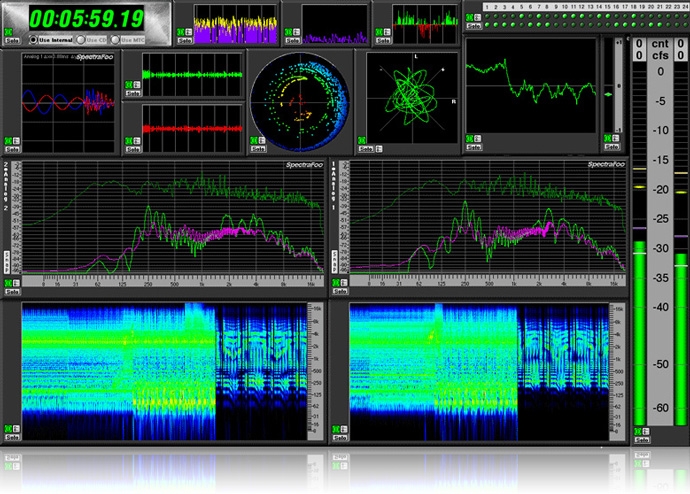
SpectraFoo has been designed to provide all of the tools you need for a powerful suite of digital meters, with all of the resolution of hardware meters at a fraction of the price. With more than 15 individual metering tools, SpectraFoo gives you all of the information you need to analyze and prepare your audio, for production, performance, mastering, or broadcast.
SpectraFoo Complete was created for live sound engineers and mixing engineers. Including tools to measure your acoustic environment or verify the behavior of your external digital devices, SpectraFoo Complete provides the following additions to SpectraFoo:
Full featured world-class signal generator:SpectraFoo Complete has a high-resolution multi-tone, multi-noise, sweepable, burstable signal generator. The generator is capable of running in real-time, or alternatively striping signal into a capture or into an AIFF or SDII file. The interface to the signal generator is numerical, which makes it very precise,
Provides high resolution 24-bit distortion free signal generation
Up to 9 simultaneous sine sweeps
Pink and White noise generation
Burst Generation
FFT synchronized sine generation
Direct generation to audio I/O, captures and files
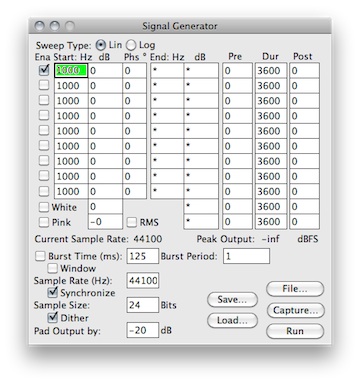
Transfer Function Measurement System: For live sound, equipment testing, or any application where you need to analyze the characteristics of acoustical and electrical audio systems, SpectraFoo Complete's built in transfer function display shows you the relative power and phase response between the left and right channels. Using Metric Halo's Music Based Measurementô, the source signal is the input to some audio processing arrangement and the response signal is the measured output of the system, making music your “test tone”. SpectraFoo uses the source signal as a point of reference and the transfer function display shows the differences in amplitude and phase between the source and response as function of frequency.
This allows you to measure the properties of audio processing systems, including systems that contain acoustic elements. You can determine the amplitude and phase response of an equalizer in the presence of musical signal as easily as measuring the sound coloration of an acoustic space.
SpectraFoo provides a Delay Detection Feature to properly measure the power and phase of the response signal relative to the source signal, as the source signal must be delayed to time-align it with the response signal. The delay finder records a segment of both signals and computes the correlation of the signals with each other. By moving the cursor to the largest correlation of the two signals, you set the system delay and compensate for the measurement delay, time-aligning the two signals.
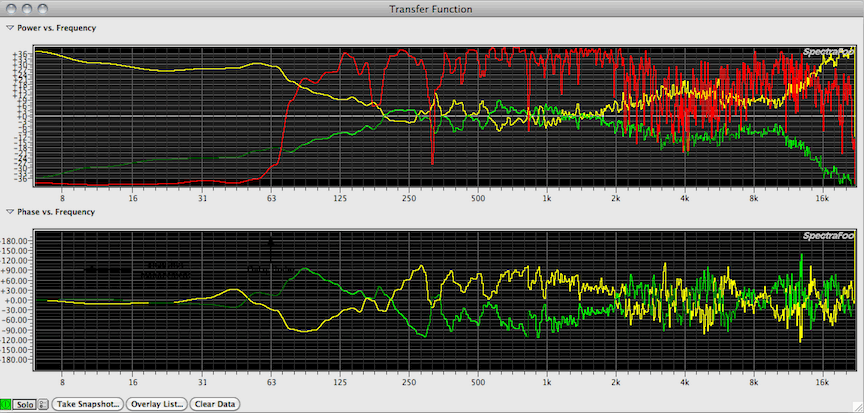
Capture and Static Analysis system: Allows you to record directly into SpectraFoo's RAM based capture system
Provides loop playback
Allows you to open sound files for detailed analysis
Record selections of audio into the computer’s RAM and perform incredibly detailed non-realtime analysis. All captures are referenced to the timecode of the source material. Captures may be initiated manually or can be triggered automatically, either with a level-based trigger or a time-based trigger. All recording is controlled and initiated by three basic capture modes that you may use:
1. Manual
Use manual mode to record on the fly. Click the record button to start recording and click it again to stop recording.
2. Timecode-based auto-punch
Use timecode-based auto-punch to record a segment of audio that starts at a particular time and ends at another time. This is like the auto- punch feature of many tape decks. Simply type the start and end times into the punch in and punch out fields and click the Record button. SpectraFoo will arm its auto-punch mechanism and wait until the timecode clock matches the punch-in time. It will then record until the timecode clock matches the punch-out time, and automatically stop.
3. Level-based auto-punch.
Use level-based auto-punch to start and stop recording based on the volume of the audio being monitored.This is great for capturing individual drum beats or for capturing entire songs. A specific example of the usefulness of level-based captures is when you are trying to determine the optimal placement of microphones on a drum kit. When coupled with the Auto Arm feature, level-based punches can be used to capture individual drum beats in a hands-free way, allowing you to devote your attention to placing the mic, while still benefiting from SpectraFoo’s analysis.
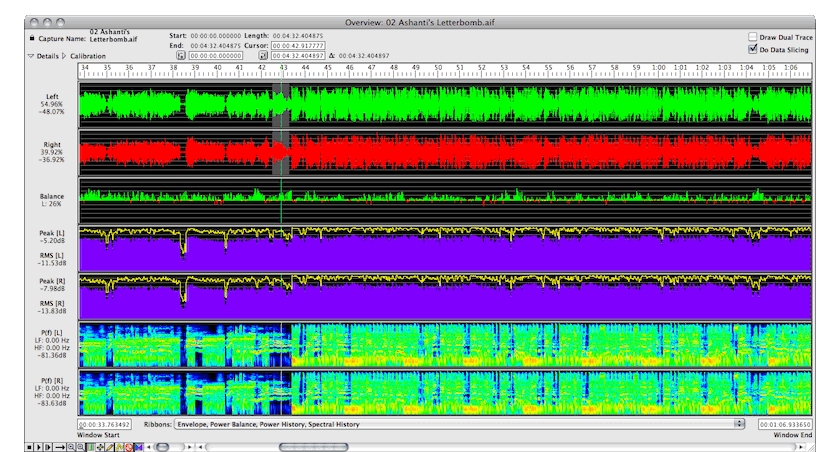
When Data Slicing is enabled, the realtime instruments display the data which lies underneath the current position of the cursor. If you drag the cursor around in the overview window, the realtime instruments will continuously update to reflect the current cursor position. If you replay the capture, the realtime rack will continuously update in sync with the playback.
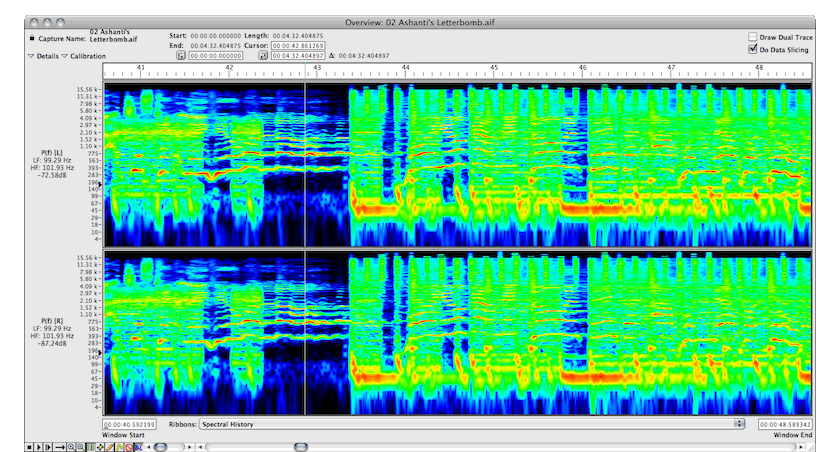
Code-Level Metering:
Three different kinds of bit meters for monitoring the low level audio bitstreams:
Bit Range Meter: Displays the range of sample codes exercised in the assigned channel of each time slice. It shows the activity in each bit of the sample word and shows you which bits are being exercised.
![]()
Bit Scope: Displays a list of the codes of all of the samples in the time slice. This allows you to see low-level activity in the signal, stuck bits, DC offsets and the like.
Each time the display is updated, all of the sample in the time slice are shown. The number of samples in the time slice are determined by the I/O hardware’s buffer size. The samples are displayed starting with the first sample in the time-slice in the upper left hand corner of the instrument. Each successive sample is place under the previous one until the bottom of the column is reached. The next sample is placed at the top of the next column.
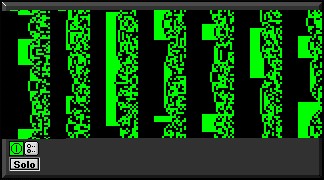
Bit Matrix Meter (Instantaneous Snapshot):Pinpoint problems with processing algorithms in your data stream, and test and design DSP algorithms with this comprehensive readout.
The Bit Matrix Meter is designed to work with 16-bit delivery media and only utilizes the top 16 bits of the samples in the signal. The meter takes the 16-bit samples and divides them into two groups: the most significant byte (MSB) which is the top 8 bits, and the least significant byte (LSB) which is the bottom 8 bits. For each sample these groups are then converted to horizontal (MSB) and vertical (LSB) offsets into a 256x256 pixel matrix.
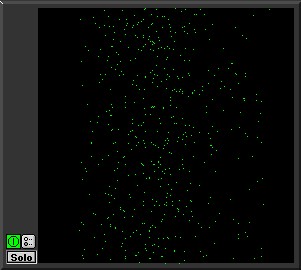
Bit Matrix Meter (Accumulation Snapshot): Switch the Bit Matrix Meter into Accumulation Mode and display the aggregate utilization of the code space. The accumulation mode does not erase the bit matrix with each new time-slice and this accumulates a picture of all of the sample code that have been exercised by the signal. This snapshot shows us that while most of the codespace is exercised by the signal, the top 3dB or so is pretty sparse. This indicates that we could compress this signal with a pretty hard ratio and a 3dB threshold and introduce very little distortion.

| Variant | 1 |


















